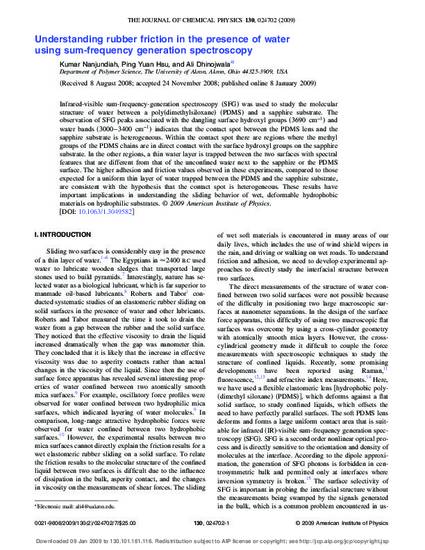
Infrared-visible sum-frequency-generation spectroscopy (SFG) was used to study the molecular structure of water between a poly(dimethylsiloxane) (PDMS) and a sapphire substrate. The observation of SFG peaks associated with the dangling surface hydroxyl groups (3690 cm(-1)) and water bands (3000-3400 cm(-1)) indicates that the contact spot between the PDMS lens and the sapphire substrate is heterogeneous. Within the contact spot there are regions where the methyl groups of the PDMS chains are in direct contact with the surface hydroxyl groups on the sapphire substrate. In the other regions, a thin water layer is trapped between the two surfaces with spectral features that are different from that of the unconfined water next to the sapphire or the PDMS surface. The higher adhesion and friction values observed in these experiments, compared to those expected for a uniform thin layer of water trapped between the PDMS and the sapphire substrate, are consistent with the hypothesis that the contact spot is heterogeneous. These results have important implications in understanding the sliding behavior of wet, deformable hydrophobic materials on hydrophilic substrates.
Available at: http://works.bepress.com/ali_dhinojwala/2/
